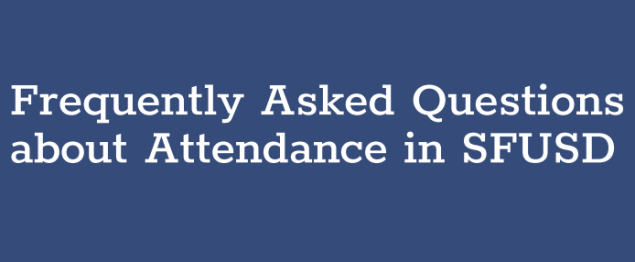How do I know how many days of school my child has missed?
ParentVUE lets you track your child’s attendance to be sure absences aren’t adding up and to see if they are excused or not. Make sure your account is active and your information is current.
How many absences is too many?
Missing a day or two here and there can add up. When students miss 10% or more of the school year – that’s just two days a month – we see an impact on grades and learning. Students also miss out time with friends and can have trouble settling back into school. To stay engaged and on track, your student should miss only when absolutely necessary. See valid reasons for absences below.
What should I do when my student will be absent?
On the day of the absence, communicate with your school via email, written note, phone call, or school specific form. Let the school know you are a parent, guardian or caregiver for the student – and give the date(s) and reason for the absence. If you are unable to notify the school in advance, check in with the main office or send a written note when your student returns to school. If you do not communicate with the school, your student will receive an unexcused absence and could be considered truant.
What are the valid reasons for a student to miss school?
See our guide to When It’s Okay to Stay Home to understand when a sick child should not come to school, as well the other situations when an absence will be excused.
How do I make a correction if I think my student has been marked absent incorrectly?
Contact your school’s main office to let them know to correct the attendance record. Be sure to indicate that you are the student’s parent or guardian, and the date when the absence was recorded. And please note: If a student is 30 minutes or more late to school without a valid excuse, it will count as an absence for the day. If you would like more guidance on an excused absence, request to speak to the school principal or assistant principal.
What happens when a student has unexcused absences?
The school or district will contact the family or guardian to develop an action plan and identify any support services the family needs to help the student get to school. For more details, see the What happens if a student has many unexcused absences? section of the Student and Family Handbook.
What’s the difference between truancy and chronic absence?
Truancy is strictly about unexcused absences – chronic absence includes all the reasons, excused and unexcused, that cause students to miss school. Research shows that chronic absence negatively impacts learning for both the students who are not in school and their classmates who are. The good news is that chronic absence can be reduced by engaging with students and families to fix the underlying problems that lead to absenteeism. If there’s something that’s making it hard for your student to get to school, or that’s making them feel unsafe or unhappy at school – please talk to a teacher or other school staff. We will work with you to find solutions, and to help your child get back on track if they’ve fallen behind. Read more about truancy vs. chronic absence here.
This page was last updated on December 6, 2023








